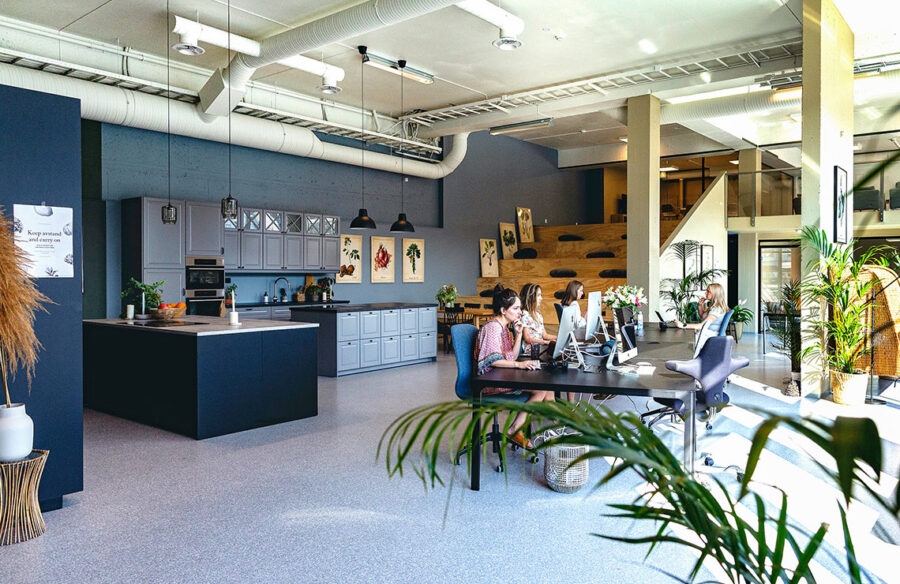Living in war
September, 2022. When Aftenposten visits the military graveyard outside of Charkiv, workers have just started using excavators instead of digging by hand. Photo: Jan Tomas Espedal, Aftenposten
Are we dreaming big enough

Are we dreaming big enough?
CRISPR-Cas9 has given us tools to rewrite life. The discovery on how to edit our genes is said to be the holy grail of science with possibility to fix gene disorders and improve people’s lives. Yet, not that many treatments or applications has been developed. How come?
A few years ago, American biochemist and Nobel prize winner Jennifer Doudna was working on her laptop in an airport lounge in New Jersey, when a couple walking by with their two boys caught her attention. The younger boy made his way on crutches, displaying signs of a hereditary disease called muscular dystrophy.
“Generally manifesting in childhood, the disease steadily robs those who have it of their ability to walk. Eventually, I knew, the crutches would no longer be enough,” she recalled in an article in The Atlantic.
Doudna had just come from a meeting where a cure for the boy’s disease appeared possible, using CRISPR technology to rewrite the DNA of kids just like him.
“Imagining how the technology I’d helped create could change this boy’s life, I was overwhelmed with emotion. Beyond hope and wonder, I was filled with a sense of fierce urgency to expand CRISPR’s impact to the people around the world who need it most,” she wrote.
In 2020, Jennifer Doudna and Emmanuelle Charpentier received the 2020 Nobel Prize in Chemistry “for the development of a method for genome editing”, known as CRISPR-Cas9. As with many great scientific achievements, scientists before them had made ground-breaking discoveries that paved the way for their work.
The potential of their discovery seems endless.
In 1987, Japanese molecular biologist Yoshizumi Ishino and his colleagues discovered a protein named Cas9 found in the Streptococcus bacterial “CRISPR” immune system that co-operates with guide RNA and works like scissors. The protein slices up the DNA of viruses, preventing them from infecting the bacterium. This natural defence system was later characterised by the Spanish molecular biologist and microbiologist Francisco Mojica. However, it was Doudna and Charpentier who showed, in 2012, that they could use different RNAs to program the protein to cut and edit different DNA. The potential of their discovery seems endless.
The blueprint of our lives
“It’s a little scary, quite honestly,” Doudna told The New York Times about the possibilities of our CRISPR future. “But it’s also quite exciting.”
Our DNA is called the blueprint of life. It contains the genetic code, which is essentially the instructions for creating an organism. By altering our DNA, we can, in a sense, rewrite the rules of life. Our eye colour, hair colour, height and the size of our noses – it’s all determined by our genes. Unfortunately, errors in our DNA can cause severe diseases. Sickle cell disease, Cystic fibrosis, Down syndrome and Huntington’s disease are examples of genetic disorders.
“If we could go in and fix these mistakes, we could save many, many lives and get rid of these diseases,” philanthropist Bill Gates has explained. Editing DNA with precision has, as he puts it, been the holy grail for scientists for decades. His foundation is funding work to see if CRISPR can be used to knock out mosquito populations dramatically, as well as to make better seeds, help with very accurate diagnostics, and lead to cure for HIV and things like sickle cell. CRISPR has also been used to enable T-cells (a part of the immune system that focuses on specific foreign particles) to find and destroy cancer cells.
As Gates points out, using the CRISPR gene editing tool for curing diseases isn’t very controversial. The idea of changing the DNA that determines your baby’s eye colour or skin tone, however, is another story. Most scientists agree that this is something we should not do. But where should we draw the line? And how do we make sure we don’t cross it?
It needs a push
In her article, Jennifer Doudna writes that the advances made so far – and those still to come in preventive medicine, diagnostics, agriculture, biomanufacturing and synthetic biology – promise to improve the lives of millions of people. They’ve also launched companies and helped existing ones break new ground. This growing CRISPR economy was estimated at USD 5.2 billion in 2020. Venture capitalists poured more than USD 1 billion into the growing ecosystem of genome-editing companies in 2021 alone.
“Sometimes, when I think about my part in all this, I am overcome,” Doudna writes. At the same time, she asks: Are we dreaming big enough? Moving quickly enough?
Her answer is “no”. She compares it with cell phones, which went from a niche luxury technology to outnumbering the human population, creating new economies and changing the way we live. For the CRISPR technology to be widely adopted, it needs a push, just like mobile phones did, Doudna argues.
“Realizing CRISPR’s full potential will require many more of us to come together. (…) Academic scientists, industry researchers, investors, policymakers and members of the public each have a role to play,” she concludes.
Positive reactions
After reading Doudna’s article, I couldn’t help but wonder why more wasn’t being done to make sure we seize this possibility to improve the lives of so many people. Here we have a pioneer of her field, waving her incredible tool, urging the world to see its potential and use it. I was curious to know if she had received any reactions to the article. Had it been the wake-up call she might have hoped?
In an e-mail, Doudna’s Lab Coordinator Keana Lucas assured me that the reactions to The Atlantic op-ed were positive.
“At this 10th-anniversary mark, it’s clear that CRISPR tech has made remarkable progress. Winning the Nobel has only brightened the spotlight and amount of investment and engagement in a technology that promises to positively change our health and the health of our world,” she told me.
A Swiss army knife
What about Emmanuelle Charpentier? Where does she stand on all this? Emmanuelle Charpentier is a French professor and researcher in microbiology, genetics and biochemistry. As of 2015, she has been a director at the Max Planck Institute for Infection Biology in Berlin. Between 2009 and 2017, she worked as a research director and guest researcher at Umeå University in Sweden. In a video clip on the University’s website from 2015 – five years before she received the Nobel prize – Charpentier explained her discovery as “a Swiss army knife that allows repairing genes”.
“If you want to discover something important, you need to ask maybe crazy questions. It is when I came to Umeå that I developed a project that was to somehow bring together two different mechanisms that became the CRISPR-Cas9 mechanism,” she says, adding that her ultimate wish is that the technology be used to treat serious genetic disorders.
She believes that one of the greatest dangers we face is that the basic sciences are no longer attractive to young people.
In 2019, Charpentier founded a company called CRISPR Therapeutics. In 2022, the company published preliminary results from a clinical trial showing that 15 patients with beta thalassemia – a severe type of anaemia that requires lifelong reliance on blood transfusions – had gone months without needing transfusions after receiving a drug that edited the gene that caused the disease. In an interview with El País, she explained that she is focused on looking for new forms of gene editing to combat antibiotic-resistant infections. She also said she believes that one of the greatest dangers we face is that the basic sciences are no longer attractive to young people, people who will need to invent new treatments and medicines in the future.
“I think we all – and especially young people – need to ask ourselves what kind of world we want to live in,” she told the Spanish newspaper.
Marcus Jarås is a Swedish associate professor at the Department of Clinical Genetics at Lund University. His work focuses on using CRISPR to find new targets for cancer treatments. Using CRISPR to better understand the biology behind different diseases is the most common way of using the technology today, he explains. Swedish scientists were quick to start using the CRISPR technology, but as far as Jarås knows, it hasn’t led to any new treatments yet. That isn’t surprising, however, considering that it normally takes ten years from discovery to approval of a new treatment.
Use of CRISPR as a gene therapeutic treatment is further complicated by the fact that there are patents in the field that require licenses for technical commercial services, Jarås adds. In part, he shares Doudna’s analysis that CRISPR needs a nudge.
“More can always be done, but I still think that CRISPR has very quickly established itself as a powerful new tool for gene editing, not least in biomedical research. On the other hand, things are slow with CRISPR in plant breeding due to the GMO debate that led to EU legislation that makes it difficult to use this technology. In this area, CRISPR could really use a push,” he says.
Needs to be handle with caution
But if CRISPR can fix errors in our DNA code, could it also accidentally cause them harm? According to Swedish researchers at Uppsala University, who’ve experimented with editing the DNA of zebrafish using the tool, the answer is “yes”. Their studies show that there were several types of unexpected changes to the fish DNA.
Sometimes, larger parts of the DNA than intended were changed. Other times, the edits were made in the wrong part of the genetic material. The researchers also saw that the mutations could be passed on to future generations of zebrafish since they had occurred in fertilized egg cells. The techniques currently being developed for humans, however, are not using reproductive cells. There is, in other words, no risk that the changes – good or bad – can be passed on to the offspring.
The point of the research, according to the scientists, is not to suggest that gene scissors are an unfit tool for treatment. Only, that it needs to be handled with caution. The Uppsala University team is now focusing on improving the safety of CRISPR-
Cas9 therapies, where cells from a patient are genetically enhanced outside of the body and reinjected as a treatment.
“Such treatments are now being developed for a wide range of diseases. Our aim is to develop efficient methods to screen for unwanted mutations in the genetically modified cells,” says Adam Ameur, Associate Professor at the Science for Life Laboratory at Uppsala University.
So, the question remains – are we using this tool to its full potential – and if not, what possible advancements are we missing out on when it comes to decreasing pain and suffering? Is it the idea of rewriting the rules for life that is holding us back, or is it simply the time it takes to make sure we get it right? Not even the inventors of the technology seem to know the answer.

Mikaela Åkerman
Editor, Omni
Years in Schibsted: 8
Workplace trends: 2023

Workplace trends
The world of work has changed dramatically in the last few years. Employees are more vocal about what they need from their employers, and companies must work harder to both attract and retain this elusive talent. These are the trends we believe will grow in the coming year.
Value driven employees
Today, employees are interested in more than high salaries and decent benefits – they want to work for firms that share their values. Research from CNBC/Momentive shows that the majority of workers wouldn’t even consider a position at a company that didn’t share their values, and about 40% would likely quit their jobs if their organisations took a stand on a political issue with which they do not agree. For companies, that means that being transparent about drivers and values can be hugely beneficial when hiring.
Upskilling and reskilling
Utilising people you already have in your organisation is not only more important than ever due to the war for talent in many spaces, it also creates a stronger organisation. Seeing and nurturing the underutilised skills of your employees, as well as developing new skills within your workforce, will create more skilled teams and likely more engaged employees. Not only that, hiring externally is difficult and expensive – something most organisations can’t afford in the current economy.
Inclusive leaders are in demand
What’s required of leaders is also changing, and companies need to take this into account. Democratic and empathic leadership is in demand. Successful companies need leaders capable of managing a diverse workforce made up of people with different needs and talents. Leading teams without discrimination and bias has always been important, but for many, the work has only just begun. We’ve seen in the previous trends that employees want their unique needs met, which means thriving companies must take this into consideration when choosing and training their leaders.
Fostering diversity, inclusion and belonging
Following the previous point – creating a workplace in which diversity, inclusion and belonging are crucial factors creates organisations where people are happier to work. And happy people make for good employees. Diversity of talent, backgrounds and personalities fosters innovation and mirrors the world your company is targeting. Making sure everyone feels comfortable being who they are at work will also open new opportunities and ideas that might otherwise have been overlooked or stifled.
Talents have global opportunities
During the pandemic, many companies realised the benefits of remote or hybrid ways of work, and though many big organisations are clamping down on working from home, others see its potential. The competition for talent now extends beyond the regions of your offices, as companies can hire exceptional talent regardless of distance. This means that talented individuals will have more job opportunities no matter where they are located – but it also means that the war for talent is far more competitive as the talent in question will have more choices.
Develop management in-house
Developing your management – not only your executives – is critical to success. Promoting talent without thorough management development can result in poor performance and dissatisfied teams. By developing the talent you already have in-house, you’re not just making use of a lot of existing knowledge, you are also more likely to retain them. Management development helps close skills gaps at an organisational level and increases your human capital: the knowledge, intelligence, and experience within your workforce.
Finding the right hybrid model that fits all
Continuing with trends borne out of the pandemic, employees are craving more flexibility in the way they work. That does include where to work – whether from their home, an office, or even on a sunny beach somewhere – but also when and how they work. A lot of people who started working from home in 2020 found that they could be more effective and enjoy their work more if they had more flexibility to decide when they worked best. For some, that still means a nine-to-five workday in the office, but for others, it may mean splitting their workdays into chunks of two or four hours, enabling them to pick up kids from school and spend time with their families during the afternoon, and then get a couple of hours of work in after the kids have gone to bed – for example.
You need to offer personal growth
Following the big shifts in the job market over the last couple of years, whether you want to call it the great resignation, the big quit or the great re-shuffle, a lot of potential employees want and expect more from their workplace. The need for growth in the workplace now goes beyond professional – people are looking for personal growth as well. Being able to facilitate this in your organisation, through mentorship programs, soft skills development or other offerings, will make you far more attractive as an employer. The future of work is also about employee well-being. Staying healthy and happy at work is in many ways crucial.
A strong community that built a strong business

Joonas Pihlajamaa and Jenni Tuomisto at Tori’s office in Helsinki.
A strong community that built a strong business
Tori is Fanland’s largest and most popular peer-to-peer marketplace. As a beloved brand the company will have an important role in Schibsted, to make circularity the obvious choice.
On Tori, you can buy anything under the sun – from furniture to hobby equipment, and from cars to apartments. Each month, more than 3.4 million Finns use Tori. There are over 500,000 deals closed, and more than 2.5 million contacts made between buyers and sellers.
Over the past 13 years, Tori has grown to be an integral part of the Finnish way of life and is currently the 11th most visited website in the country with more hits than Instagram. The marketplace has been instrumental in radically changing the way Finns consume and buy things. Used goods are no longer bought solely to save money or for ecological reasons. Rather, it makes sense to prolong the life cycle of quality products by passing them on to new owners online.
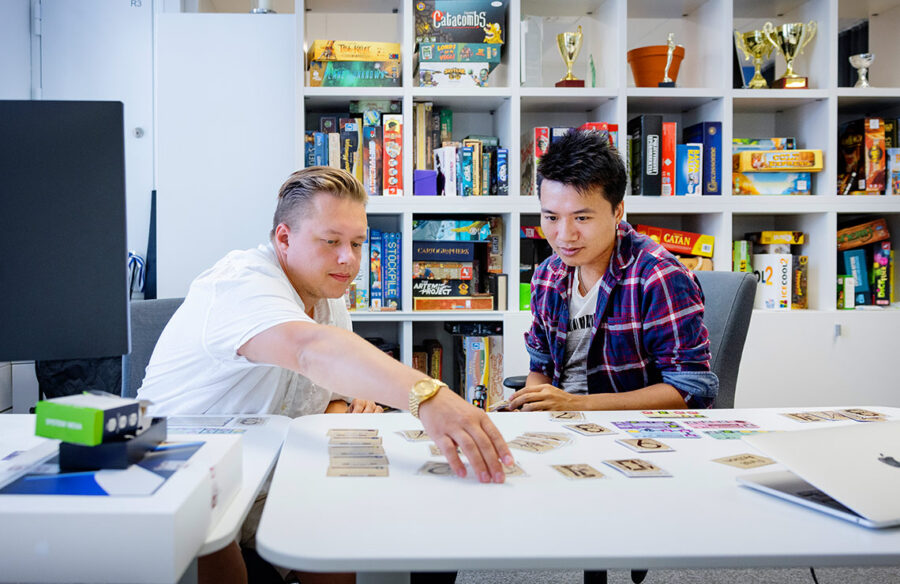
Tori was founded in 2009 by Schibsted, based on its successful Swedish sister brand Blocket. With Jussi Lystimäki leading Tori from its launch, the brand quickly became a significant player in Finland, overtaking previously established e-commerce brands. After four years of operation, Tori became the market leader in online second-hand trade in early 2013, and has since maintained that position, growing steadily through the years.
A disruptive model
“When we started, Tori was a disruptive model in Finland. It was free to list ads, users didn’t need to register and we offered instant good deals, which made buy and sell a much easier experience than leading competitors were offering,” says Jussi Lystimäki.
“All of this created a viral movement and when the inventory was in place radical marketing finalized the success”, he adds.
Now Tori has become an institution and a beloved brand in Finland, which is reflected in the way people use its name in creative ways. We can, for example, use it as a verb “to tori” (Finnish: “torittaa”, to browse Tori or trade on Tori), or refer to our purchases as “Tori finds”.
But while Tori has had great success in the Finnish market and the volume of visitors and deals is high, there is still much more potential in the field of second-hand trade – not just in terms of business opportunities, but also in that it offers a real solution to reduce people’s consumption.
Circular consumption is at the core of Tori’s business.
Tori is the hub of Finnish second-hand trade, and according to the Schibsted Second Hand Effect report, its users have a significant impact on sustainable consumption. In 2021, Tori users potentially saved almost 172,000 tonnes of CO2e emissions, 6,411 tonnes of plastic, 31,085 tonnes of steel and 6,844 tonnes of aluminium – just by selling and buying second-hand and thus reducing the need for new production.
Circular consumption is important to the Finnish people, who are putting increasingly more emphasis on choosing second-hand products and other sustainable alternatives. And in 2022, Finnish consumers perceived Tori as Finland’s most sustainable e-commerce brand in the Sustainable Brand Index? brand study.

In 2016, Jussi Lystimäki took on a new role in Schibsted’s Emerging Markets business. He was succeeded in his role at Tori by Juha Meronen, who steered the company for several years. In 2020, Schibsted grew its business in Finland by acquiring Oikotie, a leading online classifieds business from Sanoma, and Jussi returned to the CEO position of the new Schibsted Marketplaces Finland.
With its three marketplaces (Tori, Oikotie and Rakentaja), Schibsted Marketplaces Finland became an even stronger player and Tori continues to be Finland’s leading brand in second-hand trade, while Oikotie holds the second place in the jobs and real estate verticals.
Tori has always been a community of empathetic and curious people.
The legacy of the brand and its culture over the past 13 years is strong, but it has been renewed over the years with the addition of new employees, including the Oikotie team, in the company.
“Tori has always been a community of empathetic and curious people, and that hasn’t changed over the years. Our culture nurtures trust, learning, and is also challenging the status quo when needed,” says Jenni Tuomisto, Director of Tori.
“We are doing impactful business, and that keeps us motivated in our job to deliver great products for a more sustainable future.”
Tori’s long history, stable position in the Finnish market, and strong culture are accomplishments in their own right. But as the world keeps changing, Schibsted Nordic Marketplaces is adapting its course to stay relevant to meet new customers’ needs.
Synergies across countries
A journey has begun to set the different marketplaces’ verticals free – and to find synergies across countries.
In this, the work done over the course of a decade in Finland becomes even more important. Throughout the process of setting a new direction, it has been stated that two things cannot be copied from Tori, and those are the people and the culture, and the strong market positions.
Just as with all the marketplaces brands within Schibsted, Tori will remain the familiar institution that users have grown to love and continue to meet in their everyday lives. But behind the scenes, things will be slightly different.
“We are going through a shift both mentally and on a very practical level. We need to adjust our thinking to meet the demands of the changing environment and learn to work in new and smarter ways,” says Jenni Tuomisto.
“We have a strong market position and expertise, but also an equally strong community – and this will work to our advantage as we fulfil our common purpose to make circularity the obvious choice,” she states.
This is Tori
- Tori was founded in 2009.
- More than 3.4 million users visit Tori monthly.
- Approximately 50 employees in Finland (out of 250 in Schibsted Marketplaces Finland).
- 1.8 million second-hand items are for sale at any given time, and 13,000 items are sold daily.

Laura Ruokola
Communications Manager, Schibsted Marketplaces Finland
Years in Schibsted: 1
“People don't want to be obligated to go to the office”
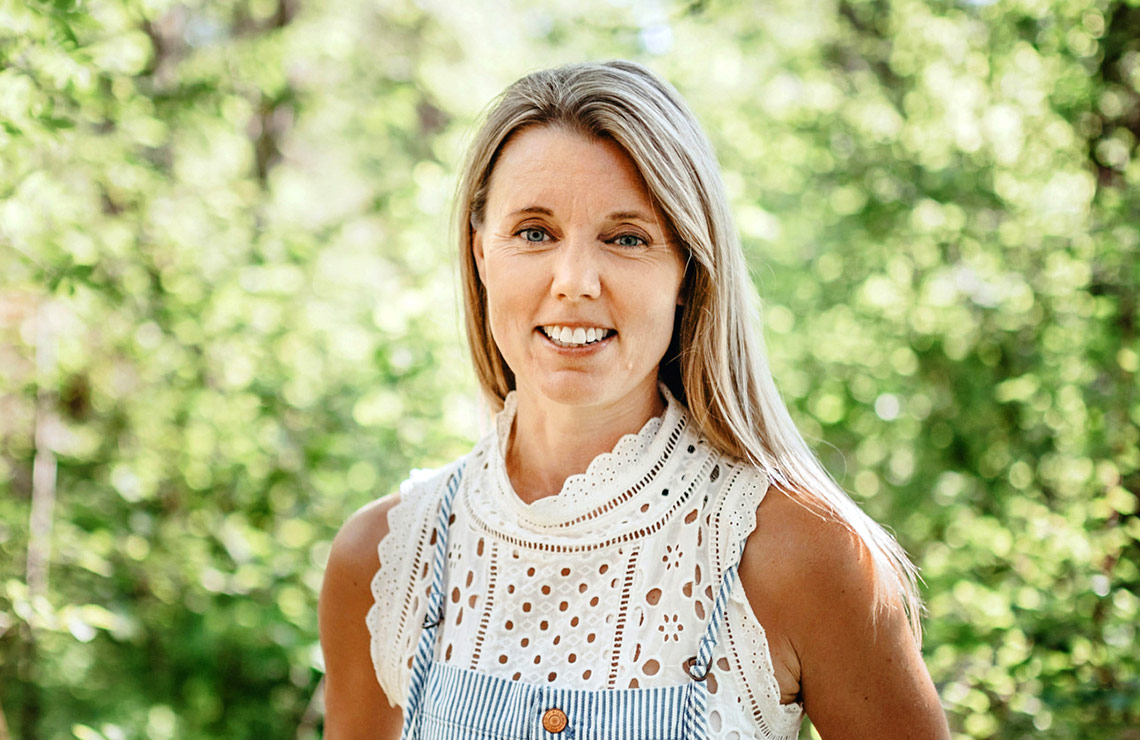
This text is based on a conversation between Anne Helene Petersen and Schibsted's former Head of People and Communication, Mette Krogsrud, at Bergen's Media Days 2022.
“People don't want to be obligated to go to the office”
After the pandemic, the hybrid model has been adopted in many offices. But how it affects work and how to apply it is still unclear. American writer and journalist Anne Helen Petersen is certain – it’s not a quick fix.
“This is hard work. Sometimes people think we’re going to come up with a quick policy on hybrid work. But we are fundamentally changing the way that we work. It’s going to be hard and it’s going to require continued work,” says Anne Helen Petersen.
She has focused a lot on how we work. She was working as a senior culture writer and correspondent for Buzzfeed when she started to take an interest in the subject. Along with her partner, she wrote the book Out of Office: The big problem and bigger promise of working from home, published in 2021, and today she has her own a newsletter, called Culture Study.
Benefits and drawbacks
When the pandemic hit Ann Helen already had been working from home for several years. She moved from New York to the rural state of Montana to work more on stories about work.
“I experienced a lot of the benefits, which included being able to go for a run at 1 p.m. just because I wanted to. I also experienced a lot of the drawbacks, such as the ability to work almost all the time.”
Now, as we have formed new habits again, the question is if the future will stay flexible.
Data collected by Slack, from surveys with more than 10,000 respondents across ten countries, shows that people working in flexible scenarios or in fully remote scenarios have a greater sense of belonging.
“This is the opposite of what most people would assume. People think that when you’re at the office you feel more of a sense of belonging with your co-workers,” says Anne Helen.
Communication crucial
Other numbers from Slack show that employees who perceived their companies to be good at communicating about why and when to come back into the office have twelve times higher job satisfaction than those who don’t feel that their companies are transparent about it.
“To me, this means that transparent companies are cultivating much healthier office cultures.”
Overall, Anne Helen is convinced that most people want a mix.
“They want to have the office as a source of collaboration and community. It’s a place to go to that can add structure to your day and your week. But people don’t want to be obligated to go when they don’t want to and when it’s not necessary.”
Those are also the indications from within Schibsted. Internal surveys show that 75% of the employees prefer to work in a hybrid or fully remote model. But there are some challenges. Globally, many managers are pushing back on remote work. Schibsted’s statistics indicate the same – managers are slightly less fond of the idea. But Anne Helen doesn’t think it’s because they don’t like it.
A presense bias
“Many leaders’ way of doing their job is really based on meeting other people. There is a managing style that I call “walking around” – they understand if someone is doing a good job by actually seeing them and starting a conversation.”
This is what she believes will lead to one of the drawbacks and what she calls “presentism”. A presence bias that means that the people who are present in the office all the time are the ones who get elevated within the organisation.
“In the US, there’s a real preference for the men to be in the office, so the fear is that we are going to take a lot of steps back in terms of gender equity and leadership.”
But once we do meet in the office, how do we spend that time? Anne Helen believes that we will see a larger understanding of being with one another, like when going to a conference, being with a larger group of people and cross-pollinating ideas. And on the smaller team level, we’re going to see more concentrated retreats – where teams socialise but also do planning and get close collaboration work done.
“To bring in people to plan and brainstorm and then go out and do the work is smart, especially if you are a distributed team.”

Ann Axelsson
Senior Project Manager, Strategic Communication
Years in Schibsted: 24
With the power to save the climate

When eight of the world’s largest seafood companies got together they realised no one would benefit from polluted, depleted oceans – so they decided to change things. This is one of the stories told at the executive programme for CEOs.
With the power to save the climate
Greta Thunberg is not the only one listening to the science. CEOs of companies that generate almost half of Sweden’s GDP have returned to the classroom to learn about climate science and action. When deep insight about the climate crisis reaches this level of decision-making, real change can come about.
It’s thanks to Lisen Schultz that the Swedish CEOs decided to clear time in their busy schedules to take the course. In 2018, she transformed what began as an annual event into an executive programme for CEOs at the Stockholm Resilience Centre at Stockholm University.
Standing alone on the stage under the strong lights, she felt the conviction grow. The worst thing had already happened to her, and so she had no fear left. Her husband, and father of her three children, had died in a bike accident in the mountains outside Nice, and now she stood there with all eyes on her. The room was filled with Sweden’s top business leaders, invited journalists and researchers, who had come to discuss sustainability and what could be done to speed up the transformation.

In memory of her husband, Lisen Schultz wanted to shape a business sector that respects the planetary boundaries and nurtures human potential. He had been editor-in-chief of a number of financial newspapers, and was passionate about issues like gender equality, diversity and sustainability in business. As a sustainability scientist at the Stockholm Resilience Centre, Lisen saw a path along which his work could be taken forward.
Looking for a stronger impact
Amidst all the chaos that ensued from the accident, she created the foundation that bears his name: the Pontus Schultz Foundation for more humane businesses. But as the climate crisis accelerated, Lisen wanted the foundation to have a stronger impact on action. And even though her grief had caused her to doubt, it all started there on a stage in the glare of a single spotlight.
No sooner said than done; one day in early autumn, the taxis rolled up and Swedish business leaders – major shareholders like Jacob Wallenberg, Tomas Billing, CEO of Nordstjernan, Henrik Henriksson, CEO of Scania and Axel Johnson’s Pia Anderberg – entered the researchers’ domain and took their seats. As a whole, the class generated a substantial share of Sweden’s GDP and accounted for CO2 emissions twice the size of Sweden’s. It was mind-boggling, but the power of science gave Lisen a new glimmer of hope.
“With lectures being given by world-leading researchers, the message would be clear and no one would shy away from ruffling a few feathers, I knew that. But I had no idea whether or not it would work.”
“The planet has financed our way of life. Now the invoices are arriving.”
Professor Johan Rockström took the classroom floor: “The planet has financed our way of life. Now the invoices are arriving.” He then proceeded to describe the anthropocene – the geological epoch in which humans shape the climate conditions – and the safe operating space for humanity.
“Four planetary boundaries have already been crossed, while others are dangerously close to their respective tipping points. The situation is dangerous but we can still change direction”, he explained. Members of the audience started shifting in their seats, and that was before Kate Raworth, economist and creator of Doughnut Economics, took the stage and insisted that economic theory had to be adapted to the planetary boundaries; a radical message that challenged the idea of infinite growth and maximum profit.
Not everyone agreed, and loud discussions ensued, but eventually the discussion shifted towards what could be done. Participants identified actions they could take in their companies, but also who else they could influence in order to achieve zero emissions, such as suppliers, employees, customers, competitors, investors and politicians. Companies can influence the world’s development, and the course participants realised they were not making the sustainability journey alone. The nightmare soon became a dream.

It needs to be In a company’s DNA
“You can’t base a transformation on a separate sustainability strategy. Clear goals are all well and good, but sustainability must be in a company’s DNA, corporate culture and governance. Changes will only last if they’re value-driven; only then will employees get onboard”, said Henrik Henriksson, CEO of Scania. The others nodded in agreement.
So far around 50 or so CEOs and owners – and even Crown Princess Victoria – have been trained by Lisen Schultz and her colleagues. But, once they’re armed with new knowledge about circularity, resilient systems and planetary boundaries, what can business leaders do? What obstacles can they overcome together? And what system of governance could accelerate this sustainable transformation?
According to Lisen Schultz, there’s a limit to how much a company can achieve single-handed to, say, reduce emissions or recycle resources. And the playing field is often tilted towards unsustainability, since many business activities don’t have to bear the costs they impose on society.
“This is where politics plays a big role at global, EU and national level; there’s no getting away from it. But companies of this size can influence politicians, especially if they join forces. That power grows strong during the course”, says Lisen.
The regulations are often decided by the politicians, and they can be about introducing bans, subsidies or taxes and duties aimed at steering the market away from whatever is fossil and resource-intensive and towards circularity and sustainability. EU’s emissions trading system and the carbon tax levied in Sweden and 26 other countries is one example. The fact that New York City pays landowners around the Hudson River to have their trees and wetlands clean the water that runs into the city taps is another one. In other words, governance systems can be large-scale and comprehensive, as in the case of the EU’s taxonomy regulation, which benefits sustainable businesses or, as in the case of New York City, can work on a smaller scale in a specific area.
In the near future the discussion will become even more forward-looking
Of course, not everyone is convinced, but in the near future the discussion will become even more forward-looking. What are the barriers to the sustainability transformation which owners and customers are slowly but surely demanding? What can promote and accelerate the green transformation, and what leads to reluctance, stagnation and “business as usual”?
“Harming the planet should be expensive, but it is not”, says Lisen Schultz.
“Having to make financial concessions often leads to relocations, but there are cases where actors actually succeed in changing the playing field simply by working together. This may sound rather banal, but bear in mind that ten companies control almost three quarters of the world’s oil reserves or that five companies account for 90 percent of global palm oil production. Our future lies in the hands of a few companies.”
She sees the situation as serious, but just as it’s possible to see which companies are actually creating pollution, it’s also possible that they can be part of the solution. Because if the five companies that own almost all of the world’s palm oil production were to decide not to sell palm oil from chopped-down rainforests, the whole playing field would change overnight. And while the world’s three biggest carbon emitters – China Coal, Saudi Aramco and Gazprom – are unlikely to adapt as long as they’re earning money with the current model, there are others who are taking a stand nonetheless. The Danish company Ørstedt previously supplied gas and oil but decided that offshore wind was the future for itself and for the planet, and reduced its emissions by 86 percent over ten years. And its profits remain high and are continuing to grow.
13 companies made an agreement
Carl Folke, professor and founder of the Stockholm Resilience Centre, gives lectures in the course and has, among many other things, led a ground-breaking study on the global seafood industry. Most of this team know that a growing global population and a changed climate make onshore crops even more unpredictable. But most people don’t realise that the world’s oceans feed three billion people. Unfortunately, this food source is also threatened by overfishing, acidification, pollution and algae blooms, leaving the fishing industry under threat on multiples fronts.
Carl Folke and his fellow researchers have shown that 13 companies dominate the global seafood industry, yet they all rely on the same resource, so if they could sit down and talk to each other, would they manage to reach agreement on a form of exploitation that would benefit everyone while still being more or less beneficial to the oceans? No sooner said than done; the researchers succeeded in gathering eight of the biggest seafood companies in a neutral place where they could discuss the situation together. It suddenly became clear to everyone sitting around the table – who came from different countries and cultures – that there was only one way forward and that they all faced the same threats of pollution, acidification, antibiotic resistance and overfishing. But the biggest insight was that, together, they could make a difference without removing the competition between them. They could quite simply agree to, for example, improve working conditions, exert influence on laws and regulations, and make it easier for consumers and authorities to track fish from vessel to table and how they are caught, which would reduce the risk of poaching. From that point on, it was a short step to setting sustainability goals, taking responsibility for supply chains and avoiding highly vulnerable areas. Because no one benefits from polluted, depleted oceans.
Despite all her knowledge about the global situation, Lisen Schultz remains an incurable optimist, and she believes that climate communication represents an untapped resource.
“Martin Luther King didn’t say ‘I have a nightmare’; instead, he painted a vision of the future where black and white people lived as equals. The same logic can be applied to climate communication. Most of us want the best for the planet, for their own sake and for that of their children, but we need help to achieve that.”
It’s about setting scientifically informed goals, taking control of our climate footprint and working locally. It’s not about adopting an anorexic lifestyle; it’s about doing whatever we can at every opportunity and cooperating on reaching our goals within the planetary boundaries.
“It is in business and industry that those heroes are found”
The business leaders in the classroom in Stockholm also got a strong message from Nigel Topping, appointed by the British government as High-level Climate Action Champion, tasked with raising industrial climate ambitions in the preparations for COP26:
“Every disaster film has heroes who refuse to give up and who find a way forward. When it comes to the climate, I’m fully convinced that it is in business and industry that those heroes are found”. According to Topping, the Paris Agreement came about partly through the united voice from hundreds of leading companies who supported an international climate agreement.
Most business leaders agree that goals need to be realistic and time-bound. But at the same time, ambitious goals are pushing the boundary of possibilities, in the same way John F Kennedy did, when he decided that a moon landing should happen. This clear goal and a solid pot of money released creativity and mobilised initiative; the impossible became possible.
Lisen now sees parallels between her own story and personal loss, and how all of us now need to adapt to a new reality, however painful that may be. But to be able to do it, we must have a vision, a goal and a plan that is sustainable, one that enables us to take a first step on the journey, together. Because that’s how we humans work. Life always finds a way.
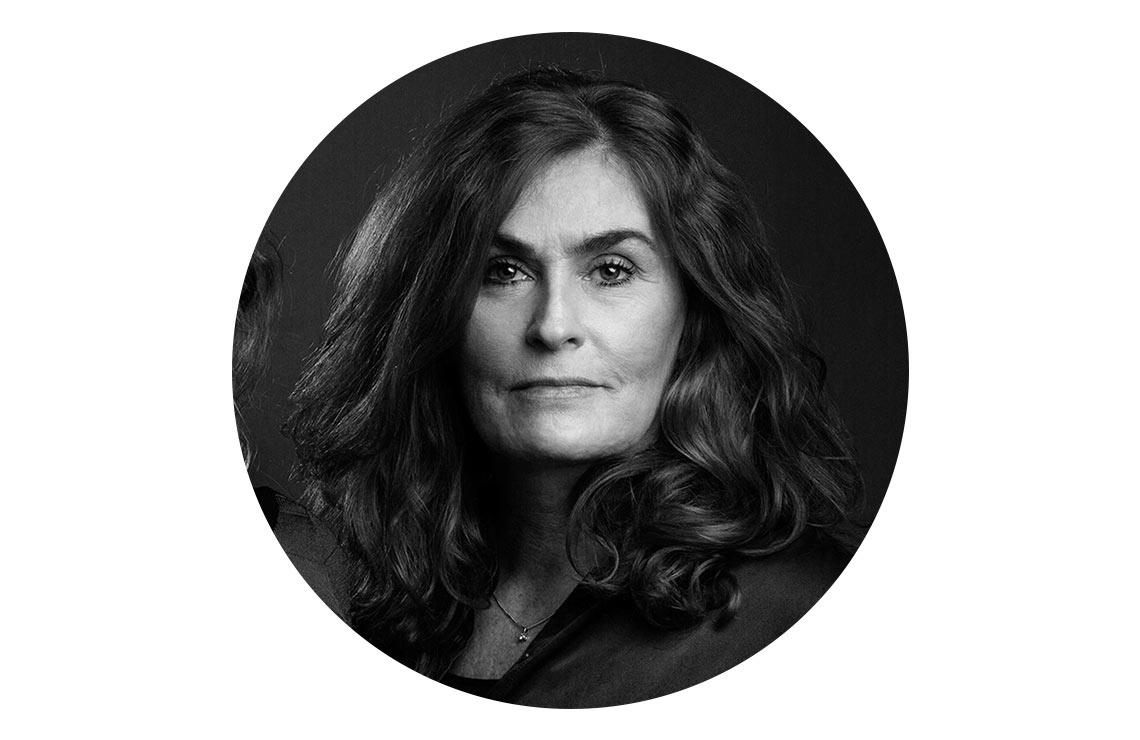
Erica Treijs
Reporter, SvD
Years in Schibsted: 20
Meet our people: Let all people blossom

Meet our people
Julie Schoen’s company DBA has recently joined the Schibsted family, Sanni Moilanen works for our Finish marketplace Tori and Håkan Halvarsson is our new head of People & Culture. Get to know them and what they do.
Let all people blossom
One comment has haunted Håkan Halvarsson more than any other. Growing up, he was often asked: “Why do you always need to go against the flow?” Ever since, it has been clear to him that this is probably the most important thing he can do.
“My mother taught to always question given things.”
Perhaps this thinking will infuse Schibsted – as Håkan’s new assignment is to develop leadership and culture across the company. It’s not exactly a straightforward task in Schibsted, since it consists of many strong and independent brands, each with their own identity and culture.
“The pressure to be a modern and attractive employer has increased enormously. Not least has the pandemic fast forwarded us by 15 years with new ways of working, which is truly creating a global work force. Schibsted’s strength is that we are stronger together.”
In Håkan’s mind the key to fully acting on this advantage is through leadership. And building a common, overarching leadership culture is now high on the agenda. One step on this journey is the recently launched Harvard program in disruptive innovation.
“We also need to build our culture around how to find failures, catapult learning and optimise solutions. Failure is a great force if harnessed well. That’s how innovation happens.”
Going back to that comment about going against the flow, Håkan is also on a personal crusade to promote everyone’s uniqueness as a strength.
“When I think institutions in society, my impression is that they are made to crush uniqueness because it’s simply irritating. If our leaders and our culture could instead view individual uniqueness as a strength and let all people blossom to their full potential, I’m convinced that more success will come to all of us!”
Håkan Halvarsson
SvP People & Culture
Years in Schibsted: 10

Finding unknown treasures
Nice and engaging storytelling is great for inspiration and an effective marketing tool.
Julie Schoen has been working at DBA (Den Blå Avis, the Danish marketplace that recently became part of the Schibsted family) since 2017, and she and the marketing team have taken the idea of telling stories to the next level.
“When I started to contact sellers behind interesting ads, asking them to tell their stories – the effect and the engagement grew, it became a success.”
Today the DBA Guide is now a full site with stories about things for sale, tips on how to “upcycle” used things and guides on how to get your stuff sold. One of the most popular video concepts is about collectors.
“We focus on ordinary things that most people have at home, like puzzles for example. It’s great to show that things you might have in your basement can actually be worth some money.”
For other stories, Julie meets up with people who are selling more unique things, to create entertaining articles and videos, and to show people what they can do with reused things.
“It’s also nice to demonstrate that sellers and buyers are just ordinary people, like you and me. Sometimes people worry about meeting people they don’t know.”
Julie Schoen
Editor DBA Guide, spokesperson DBA
Years in Schibsted: 0.5

Supervisors will build the culture
When Schibsted bought Oikotie, there was a need to create something that could bind the company together with Tori – the other Finnish marketplace owned by Schibsted.
Sanni Moilanen, and the rest of cthe people team in Finland, began looking into a new kind of managerial role, to serve as an enabler for creating a strong united culture, for all 180 employees in the two different companies.
“We needed to build something from scratch that could give us a common foundation”, Sanni explains.
The idea was to define a role that would focus on people, coaching and leadership, instead of functional responsibilities, a concept that Sanni found so interesting that she decided to write her master’s thesis on how to define it – a role they ended up calling “supervisor”.
“The purpose of our supervisor is to empower employees to reach their full potential and to support a more modern way to lead. And we are convinced that this will lead to an innovative culture.”
The role is still new but it has already brought managers together. The onboarding included a “Supervisor Buddy” system in which two managers met and discussed the role regularly. And Sanni is quite happy with the results.
“I believe this is the first step towards our goal of creating a true learning organisation.”
Sanni Moilanen
Learning & Development Manager
Years in Schibsted: Almost 6
I believe it can fly

I believe it can fly
The world’s tech investors are turning their attention to electric planes; but are battery-powered engines enough to get airline companies up and flying again?
But first, let’s get the cultural reference out of the way: R. Kelly believed he could fly, and for a while he did. But he flew too high and ended up a dark hole he won’t be coming out of any time soon. Many of the companies which are currently flying high on promises of electric planes will suffer a similar fate.
Electric aircraft may seem a long way off right now, but things can move fast in the world of technology. No one could envisage a world without air travel, either.
A life-threatening virus and closed national borders knocked the wind out of the airlines. Some of them hit the canvas, while others clung to the ropes and tried to stay on their feet despite feeling groggy and confused. Their revenue streams were cut off, and no matter where you build your levee, water will always find a way. Virtual meetings and advanced presentation tools aren’t actually that new, but the pandemic struck at the same time as these technologies matured. Bit rates have now become good enough, so public and private enterprises – and people generally – were now forced to take a giant leap into a new reality, with communication technology which otherwise would have been lightyears away. They discovered that in most cases they didn’t need to fly at all.
And then came the reports concluding that we should do whatever we could to avoid flying.
Several alarming climate reports from the UN are causing passengers to lose sleep at the mere thought of helping the airlines to stay afloat.
A negligible proportion of the world’s population flies frequently, yet air traffic accounts for around 2.4 percent of carbon dioxide (CO2) emissions. On top of that comes emissions of nitrous oxides, sulphur dioxide, carbon monoxide and soot. An EU report from the end of 2020 confirms that the combined impact of these emissions is at least as serious for the climate as the CO2 emissions alone.
Some airlines are trying to put lipstick on a pig by bragging how fuel-efficient their planes are.
Some airlines are trying to put lipstick on a pig by bragging how fuel-efficient their planes are. And to some extent they’re right; modern passenger planes use way less fuel than they did 20 years ago. But they still use a lot of fuel. And before the virus took off in Wuhan, people travelled way more than they did back then. So, emissions have not dropped over time; they’ve risen dramatically.
Everyone realises that the aviation industry needs to cut its emissions – for moral as well as economic reasons. Many countries have now adopted political strategies to dramatically cut emissions from air traffic in the coming decades. The first airline to offer passengers a climate-friendly, quiet plane – and a good conscience – will laugh all the way to the bank. You only have to look at the auto industry. Part of the reason why investors have money burning a hole in their pockets is that they missed out on Tesla.
A wonderful experience
It just so happens that, at the time of writing, I’m driving a Tesla all over Italy. There are still very few electric vehicles here (and the further south you go, the fewer you see), and the Model S, which is now a common family car in Norway, attracts as much “attenzione” in Italy as a Lamborghini Aventador. Besides, it’s a wonderful experience to move silently through the vineyards with the top down in the low yellow light before darkness falls. And the absence of a cloud of exhaust fumes trailing behind me makes it all the more beautiful.
The future of the auto industry is electric. There’s no doubt about it. Even the present is electric. But somewhere in the mountains in Abruzzo I discovered an uncomfortable truth: the amazing power of an internal combustion engine. There are still some areas where the electric vehicle is outdone: with a petrol-powered car I could have avoided spending endless hours at charging stations; I could have chosen other routes; and I could have driven to out-of-the-way places that lie far beyond the reach of any charging station. I would have avoided having a tiny heart attack from having just about enough battery power to reach a charger but making a wrong turn at a traffic circle and ending up on a freeway heading in the wrong direction.
But things could have been worse. I could have been flying a plane.
Here’s my theory: the further you are from the ground, the greater your range anxiety. If my Tesla runs out of power on a roadside somewhere in Tuscany, theoretically I’ll have time to down a bistecca and glass of a decent Brunello while I wait for roadside assistance. If a plane runs out of power at 20,000 feet, theoretically I’ll have time to say a short prayer before it’s all definitively over.
The apparently insurmountable problem is that the need for more battery capacity increases exponentially with the distance from the ground. Moving a plane carrying cargo and passengers from one place to another demands a colossal amount of energy.
Heavy as lead
In an ideal world, the airlines would simply have replaced the fuel engines in an already approved plane. It would be faster, cheaper and simpler than going all the way back to the drawing board. But it’s not that simple. Electric engines require batteries which (currently) are as heavy as lead. A plane that is approved with an engine weighing, let’s say, one ton with a full fuel tank, would not be able to fly with an electric engine that weighed ten tons with batteries. So, to reduce the weight, you would need to reduce the battery capacity – and consequently the range.
This is what’s giving the industry its biggest headache right now. If enough batteries were crammed into a Boeing 737 to make it possible to fly from London to New York, the plane would be so heavy that it would sink into the runway rather than take off from it. Nor would there be any space for passengers or cargo, which would make the whole exercise pointless anyway.
Big electric passenger planes will therefore not be a reality until the batteries are made considerably smaller and more efficient. We will get there sooner or later, but even the developers says we’re at least a couple of decades away – unless, that is, stopping over 30 times between Stockholm and Rome becomes a viable business model. But this doesn’t mean that electric planes are a bad idea.
Some of these developers may well succeed, but many will be kept afloat by tall tales and naive investors
Loads of companies are now working on developing electric aircraft. Tiny helicopter-like vehicles that can be used as taxis or delivery vehicles are generating the most hype. Many of them look ultra-cool, resembling the futuristic drawings we did in elementary school in the 1980s, with people wearing silver clothes, eating pills instead of food and whizzing around with jet packs and flying cars.
Some of these developers may well succeed, but many will be kept afloat by tall tales and naive investors. Many have already failed, and more will follow. The most exciting and promising developments are happening in the more conventional part of the aviation industry. Only once passenger planes become electric will they really take off.
Two trends stand out
SAS is collaborating with Airbus, United with Swedish startup Heart, and Easyjet with the American startup Wright Electric, and so on. Most of the airlines are desperate to get an electric plane into the air because it could prove profitable – and sooner than you might expect.
If you compare today’s aviation industry with that of the 1980s, two trends stand out:
- The regional airports are increasingly underused.
- The airlines are flying bigger planes with more seats.
These trends are driven by the fact that the cost of buying and maintaining an aircraft engine is roughly the same regardless of size and trip distance. This makes small passenger aircraft for short routes less profitable. In the 1980s, the average number of seats on regional flights was 20, whereas today it’s 80.
This does not necessarily favour the interests of passengers; they have to spend more time and money on reaching the large airports, they depart from somewhere far from home and land somewhere far from their final destination, and do so in huge, noisy and polluting planes.
Regional flight might be profitable
Investors and founders of companies like Heart and Eviation in Israel claim that the cost of buying and maintaining an electric engine is a fraction of the same cost for a fuel engine, and that electrification can therefore make regional flights using small aircraft profitable again.
In September Rolls-Royce completed a successful 15-minute flight test in “Spirit of Innovation”, an all-electric aircraft in the south of England. The aircraft only has one seat, but the experience gained will be used to develop a passenger aircraft.
Tecnam in Italy is hoping to have an all-electric aircraft with a capacity for nine passengers in the air in 2026, complete with a Rolls-Royce engine. Norway’s Widerøe has shown an interest, since a large proportion of its flights cover short distances in northern Norway. The range at the time of launch will be around 200 kilometres. Heart Aerospace, which is based outside Gothenburg in Sweden, is working on an electric plane for 19 passengers. The range at the time of launch will be 400 kilometres.
Sceptics would dismiss these performance properties as ridiculous compared to fuel aircraft, in terms of both passenger capacity and range. But here’s the interesting part: 400 kilometres is enough to cover around 80 percent of the routes in markets like those in the Scandinavian countries. Other interesting markets for this type of aircraft include island-hopping in countries like Indonesia, Greece, Japan and the Philippines, or indeed any country with mountain ranges or lakes that take a long time to traverse. Or for moving troops and crews. Air ambulance services. You name it.
This summer, the American airline company United placed an order for 100 of these aircraft with Heart.
Severe economic impact
It’s happening now … or soon will be, at least.
As we know, the aviation industry was hit hard by the coronavirus pandemic in 2020. Few people wanted to travel, and those who did were not allowed. The airlines’ revenue streams dried up, and orders for new aircraft and engines were cancelled.
The economic impacts were severe. Rolls-Royce lost 4.5 billion USD in 2020, and had to cut around 7,000 jobs to save money as well as make some tough priorities in other parts of its operations. This will likely delay deliveries of new engines by several years, which in turn may create delays for Tecnam and Widerøe. So the chances of sitting in an electric plane any time soon are slim, though it may well be a reality by 2030.
In the meantime, see you on Teams.

Joacim Lund
Technology commentator, Aftenposten
Years in Schibsted: 16
Waging the war for talent

Waging the war for talent
Global talent shortage is on the top agenda for all organisations. In Schibsted, new ideas on how to address this are up for discussion. Offering partly remote work to employees is one key effort. We also look into some more key people trends.
Talent shortages are at record highs and unemployment at multi-decade lows. According to Gartner’s Emerging Risks Survey 2021, global talent shortage is now the top emerging risk for all organisations. Technology driven organisations also anticipate skill gaps in key roles post-pandemic, while dealing with one of the highest global attrition rates, at 13.2 percent annually.
Research also shows that 46 percent of the global workforce is potentially planning to change jobs as they now can work remotely. Remote job postings on Linkedin have increased five times since the pandemic outbreak. We are entering a talent migration that is larger than anything we have seen before, where many people are rethinking not just how we work, but why we work. More people will be doing work they love at companies they feel passionate about, leading to greater success for organisations which engage their employees with empathy, trust and purpose.
To tackle what is to come, employers need to step up their game to continuously develop and reskill their workforce and rethink how they can attract and recruit talent.
At Schibsted, we recognise these challenges, but also the opportunity to support and enable the building of new workplace norms that lead to both greater employee fulfilment and better business results.
Investing in a talent agenda with new solutions for hybrid work, personal development and employee experience will be crucial to succeed in the unprecedented war for talent that we are up against.
These are some of our ideas to meet the challenges:
Trusted leadership
We know from research that companies with superior leadership outperform other companies on the entire talent agenda. As role models, our leaders are key drivers of culture as well as the strategic agenda. We believe that continuous leadership training and programs to build on our principles and group strategy will be as important as ever.
Diversity, Inclusion and Belonging
In September 2021 Schibsted hired its first Global Head of Diversity, Inclusion and Belonging (read the interview with Sumeet Singh Patpatia on pages 54–55). This is the first step to establish a group-wide approach to the question on how Schibsted can create competitive advantage through an inclusive culture.
Inspire people to grow
Research confirms that the main reason employees leave an organisation and the primary reason they join are career opportunities. At the same time, 75 percent of organisations are anticipating skills gaps in key roles. In Schibsted we have taken the first steps in building a “learning organisation”. We believe our ability to learn and translate the learning into action rapidly, is an ultimate competitive advantage. Our
Learning organisation strategy includes:
- Dedicated time for development (ten percent within tech)
- Sharing learning processes and practices through common learning platforms
- Strategic plans for competence development for all employees
- Increasing the level of cross-Schibsted employee mobility
- From industry to graduate hire at scale
We strongly believe that hiring for learnability will be the sustainable approach for the future. Acquiring learnability and providing unproven talent with great learning opportunities and career paths are keys to success to attract and retain talent.
Read more: People trends in short
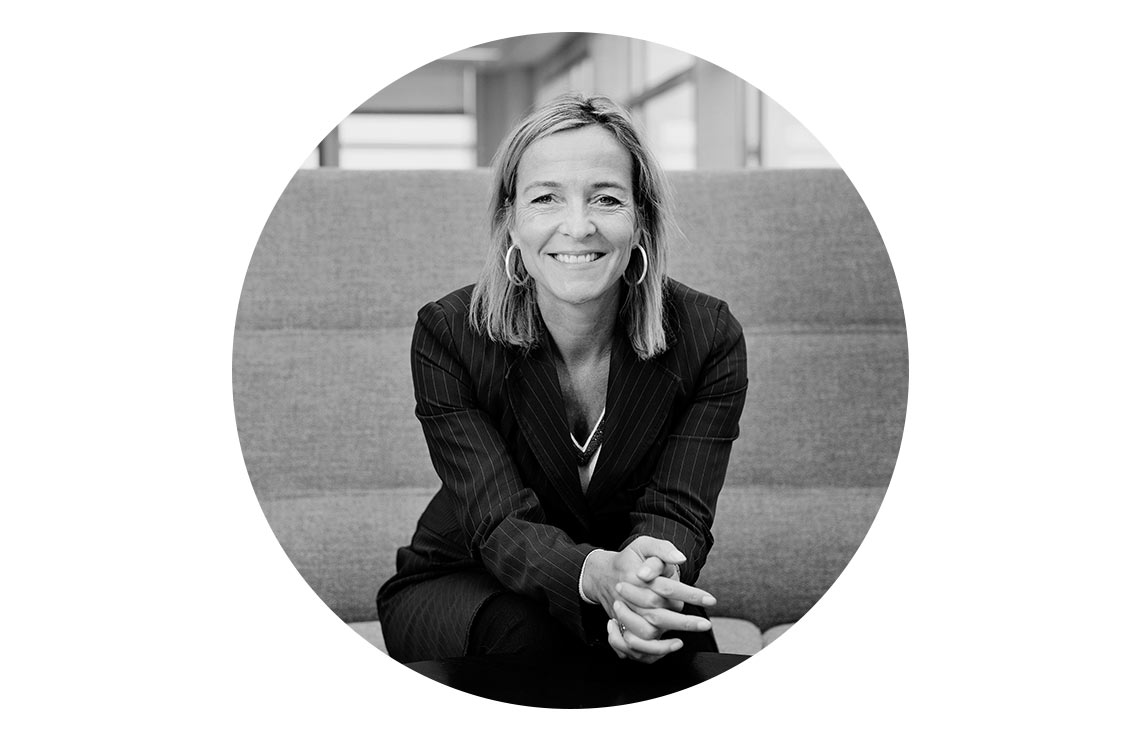
Mette Krogsrud
EVP people & Corporate Affairs
Years in Schibsted: 8.5
Why groupthink is bad for business

Sumeet Singh Patpatia has been interested in diversity issues for a long time. For twelve years, he’s been organising Turban Day in Oslo. Its goal is to make Norway the best country in the world to be different in.
Why groupthink is bad for business
His aim is to make his newly created role obsolete, and to make Schibsted the world’s best workplace when it comes to being different. Sumeet Singh Patpatia is Schibsted’s Head of Diversity, Inclusion and Belonging.
“When I grew up, I was one of only three kids with dark skin in the whole of my preschool. I was always different, and I lived in two different worlds: the Norwegian one outside my home and the one inside my family, and I had to learn how to navigate both.”
It’s this experience that led Sumeet Singh Patpatia to his role as Head of Diversity, Inclusion and Belonging in Schibsted. By living in those two separate worlds, he learned early on that there were advantages to understanding other groups, though up to now his interest in overcoming differences had been something he did in his own time. In his professional life he worked on digital transformation and business development.
“I didn’t know you could do it as a job! I’ve been interested in these issues since I was a teenager, but only in my spare time.”
Crucial for the business
The reason why he can now bring this interest into his professional life is the growing insight in Schibsted that we need to act proactively to achieve a more diverse workforce – and that we’ll lose our competitive edge if we don’t. It’s crucial for attracting the best talents, for developing products and for innovation.
“Many companies have a challenge in reflecting the population. If we always recruit people who are like ourselves, we’ll have a problem; we’ll miss out on a lot of the talent out there”, says Sumeet, who also stresses the importance of drawing on different perspectives in product development.
“If you want to innovate and enter new markets, you need to hear multiple perspectives. Groupthink can be bad for business.”
But he also thinks it’s easy to lose sight of diversity from the traditional perspective when what really matters is inclusion, and that many people today feel excluded even though outwardly they seem to belong to the group of people they work with.
“Being excluded hurts. Some research show that social and physical pain has the same effect on our brains.”
Raising awareness and providing tools
In practical terms, Sumeet’s role is to ensure that Schibsted has diversity competency and diversity maturity, and that these are connected to inclusion and belonging. In the first phase he will analyse what that looks like by talking to many people throughout the organisation. The next step is to devise a plan which he already knows will include training for managers.
“It’s about raising awareness, but also about providing managers with tangible tools. As a manager, how comfortable are you meeting someone who is blind, has a different sexual orientation from you or who wears a turban? Do you dare to be curious and try to understand what it means? That’s where my role comes in.”
Hi also thinks that in Schibsted today there is a lot of diversity which isn’t utilized to the fullest.
“Potentially there is a lot of value in giving this diversity a voice. Thus, it is not just about recruiting diversity, but more importantly including diversity. Including all.”
As a Sikh, Sumeet wears a turban. It also plays a role in the project he’s most proud of. For twelve years now he’s been one of the organisers of the Norwegian Turban Day in Oslo, an international event staged in April every year to raise awareness of Sikhs and of the turban as part of their culture and religion. The Oslo event’s goal is to make Norway the world’s best country to be different in and the general public is invited to wear a turban for a day. Sumeet refers to it as a roundabout way of “mimicking” another culture, but he thinks it has a lot of value for understanding others. And he now sees that the Turban Day project succeeded in that; in a recent survey on the level of acceptance of various symbols in Norway, the turban ranked a joint third with the Christian cross.
Now he’s committed to making the Schibsted project the one he’ll be most proud of: “We’re going to make sure that you and I and everyone can bring our whole selves to the workplace.”

Ann Axelsson
Senior Product Manager, Strategic Communications
Years in Schibsted: 23
How can we reach the unreachable?

How can we reach the unreachable?
I have a hard time understanding people who favour conspiracies and outright lies over journalism and facts. The problem with understanding “the others” probably explains why society is becoming so polarised.
In a post-truth society, the fundamental assumption for journalism no longer holds. We’re used to thinking that independent, fact-based journalism, practiced in accordance with professional codes of ethics and made accessible to all, defines its social mission. So far, the question of what to do when a substantial part of the population actively opts to turn away from journalism hasn’t been taken seriously.
This phenomenon has long since acquired an academic term which the Oxford Dictionaries selected as Word of the Year in 2016: post-truth; other variations include post-truth politics, post-truth society and post-truth democracy. A post-truth society is one where the political debate is based on appeals to emotion rather than on a reliance on facts. Claims are repeated despite being refuted, and a substantial part of the population don’t care about the truth. The emotional affiliation to one’s own tribe – us against them – takes precedence over everything else.
I can understand that people who are going through a life crisis make irrational choices that can harm them. And I can understand that people who find themselves in a difficult life situation can isolate themselves and withdraw from the rest of the world. What’s harder to grasp is how large groups of people actively and persistently turn away from the facts and from the institutions whose task it is to uncover and communicate those facts; and this applies not only to journalism but also to providers of research and statistics. It’s also really hard to understand that voters don’t care whether a head of state tells the truth or lies.

It’s easy to cite USA as an example; maybe too easy. Yet after four years with Donald Trump as president, certain things have become so visible in the United States that they can serve as examples of political, social and psychological phenomena that will have a lot of potential in other countries, too. When the Trump administration first talked about “alternative facts” to legitimise verifiable lies, I found it comical. I was less amused when I realised that many Trump supporters couldn’t care less whether the president spoke the truth or not. This was a reality I simply couldn’t get my head around – and still can’t. Once the surprise at these trends in US politics subsided, we took comfort in the thought that at least this would never happen in Scandinavia. If a prime minister of Norway had dished up mere a fraction of Trump’s lies, that person would be forced to resign, I think. Journalism and facts will likely continue to hold a strong position in our countries.
But we don’t have to go further than to Hungary, Poland or the Czech Republic to find countries with divisions similar to those in the United States, and perhaps with similar potential for a post-truth wave. Like the United States, the clearest dividing line in these countries runs between urban and rural areas. We can see the same dividing line clearer than ever in Norway, too, following the general election in 2021. But surely there’s no potential for post-truth enclaves in this prosperous and egalitarian society?
Even more alarming are the efforts of authoritarian states to control the information fed to their citizens
Access to independent and verifiable journalism in a diverse media landscape doesn’t simply come automatically. Factors that govern this access can be both economic and political, and in poor countries with huge economic disparities, quality journalism is the reserve of the elite. Even more alarming are the efforts of authoritarian states to control the information fed to their citizens and to replace independent journalism with propaganda. In a post-truth society, these explanations for a flawed understanding of reality have no validity; it is the citizens’ free and independent choices that lead to journalism being rejected. The same phenomenon could probably be seen in parts of the German population in the years following World War I, and other historical parallels may also exist. What’s new is that the social and psychological conditions for this phenomenon are sustained in the information flow in social networks controlled by algorithms.
In an attempt to make sense of this, I believe the reason why the emotions of a relatively large group of people prevail over facts may lie in political developments. The social elite have “sold” globalisation as a system without losers. Free trade and competition without barriers have led to global economic growth we would not have seen in a more protectionist world order. But behind the big numbers and principles, little attention has been paid to the downside and to those who will be worse off, especially those who lose their jobs or whose wages fall behind compared to the rest of society.
In a binary public debate, reported and amplified by many media, you are viewed as either for or against globalisation. Those who believe that globalisation is good, but that more work is needed to find solutions for those who are left out, are largely ignored. As is often the case, polarisation and the need for snappy simplification mean that those views are seen in terms of black or white.
Donald Trump is no longer alone in dismissing news stories he doesn’t like as “fake news.”
In the Nordic countries, it is interesting to see how Denmark’s Social Democracy party has put anti-globalisation, a highly restrictive immigration policy and a critical stance towards technology on its platform, all of which are rather out of character for traditional social democrats. Since this change in course, the party has gained a dominant position in Danish politics.
Along with the other more formal institutions in Danish society, editorial desks and journalism in general are perceived as an institution of power. When trust in that power erodes among those who feel overlooked and “sacrificed”, journalism gets caught in the undertow. The term “mainstream media” is meant to brand the media as the hangers-on of the powers that be. Donald Trump is no longer alone in dismissing news stories he doesn’t like as “fake news”; the term has now gone viral.
These attempts to see connections and to reason, amount to nothing more than pure speculation. “På seg selv kjenner man ingen andre” (an inversion of the phrase “It takes one to know one”) is the aptly chosen title of a book I read a long time ago. It’s a useful insight. When you live in one of the most privileged societies in one of the most privileged corners of the world, you can easily overestimate your ability to understand the rest of the world. One interesting question to ask ourselves occasionally is: when was the last time I interacted with a representative sample of the population in my own country for long enough to grasp what was going on?
Nordic media organisations should also discuss whether we have sufficient presence in potentially post-truth environments.
Once post-truth environments evolve, it’s presumably extremely difficult for journalism to regain entry. The question is whether journalism can do more to help avoid such a collapse of democracy, and I think we have some options here. The critical one is to work even harder to bring those who are left out into the public eye, not only by taking an occasional peek in a feature article, but also by turning the problems faced by these groups into a more commonplace aspect of political journalism. The US media were accused of not having understood the underlying currents in American society that allowed Trump to come to power in 2016. The same criticism was levelled at the British media in connection with Brexit in the same year.
Nordic media organisations should also discuss whether we have sufficient presence in potentially post-truth environments.
Are we capable of distinguishing between xenophobia and racism in our journalistic coverage?
Are we capable of distinguishing between what sometimes is poorly articulated frustration and anger on the one hand and legitimate concerns and fears on the other?
Do we listen or do we judge? Do we exclude or do we include?
Do we have control of our personal prejudices? Any attempt to understand may be based on a flawed analysis, because the distance is too great and the knowledge too small. All the same, it’s better to try to understand, to make mistakes without fear of losing face, and to listen, learn and try again than to turn away from a part of the population we don’t understand.

Einar Hålien
Group Editor and Senior Public Policy Advisor
Years in Schibsted: 24
A tastier experience
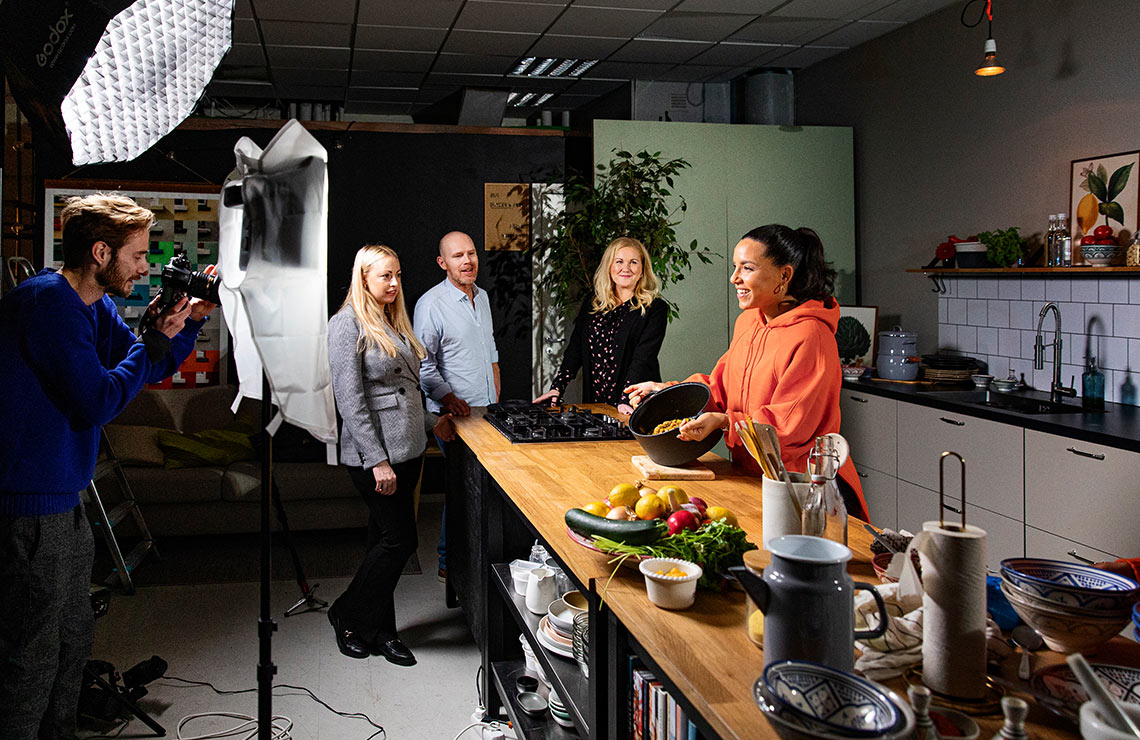
Fredrik Nilsson is taking stills of Markiz Tainton’s show at Godare. Carolina Hermansson and Tobias Lundén from the production team are checking in, together with Karin Widmark, Commercial Manager.
A tastier experience
In just a few years, Schibsted’s food channels, Matkanalen and Godare, have grown to inspire more than a million Scandinavians in the kitchen every month. At the same time, the various cooking show concepts have also reached a new group of advertisers within the food industry – and added a colourful feature segment to Aftonbladet.
In 2015, Øivind Lindøe founded Matkanalen (the food channel) a TV channel purely focused on food. The TV landscape was full of cooking shows but almost all of them were merged with a reality, competition or celebrity element.
“There wasn’t a Scandinavian food channel at the time – that was the starting point”, Lindøe says.
“I have worked with starting up companies before, but never before got such strong and early feedback that I was on the right track as with Matkanalen.”
Øivind Lindøe has a background in marketing and economics. Cooking was not one of his main strengths.
“Luckily, my wife is a great cook, but I can honestly say that I, at that point, was struggling to find an aubergine in the supermarket. And there are probably a lot of other guys out there who have also been able to benefit from Matkanalen.”

About 250 different episodes later, Øivind Lindøe is not the only Norwegian to have improved his cooking. His TV channel now reaches 600,000 monthly viewers.
The largest platform is Snapchat, where Matkanalen has 230,000 subscribers. As not everyone has a TV in the kitchen, a food channel has to find other ways to reach them.
“We aim to be in everybody’s pocket. To be able to watch this on linear TV is just the base, a starting point. We see that people, more and more often, watch replays of our shows on their Ipad or on Snapchat”, he explains. He also recognises that they probably will have to adjust to other markets and platforms going forward.
“There might be new social media platforms popping up that we don’t know about. A visual version of Clubhouse perhaps? Or maybe we will be able to cook the same food as twelve other people, at the same time on a Saturday, and you all have a group room where you work together.” Another goal at Matkanalen is to always keep climate and sustainability close to the end-product.
“Everything we talk about is in line with preserving nature, from using every part of a plant to spreading knowledge about the importance of using local products rather than buying them from Italy, even though they may be great”, says Øivind Lindøe.
“That awareness is important. We are a part of the global trend of steering away from processed food, teaching people to make it themselves.”
Perfect timing
Schibsted bought Matkanalen in September 2019, and then launched its sister channel in Sweden in April the year after. It was named Godare (Tastier), as the name Matkanalen already existed as a Youtube channel run by dairy product giant Arla.
The timing was perfect – millions of Swedes were just about to start working from home, spending more time in their own kitchens. The challenge was that Godare’s commercial manager, Karin Widmark, was one of them. Fresh from Swedish national network TV4, she only had one day in the office before the pandemic forced the team to continue working from home.
“I got the mission to be responsible for a brand-new TV channel from my kitchen table”, Karin Widmark says.
“There were a lot of decisions that needed to be taken all the time, and I had to go off gut feeling and previous experiences. And it’s been fantastic. The best thing I’ve done in my whole life.”
Aiming at people between 25 and 59, with a 50 percent split between men and women, Godare was going to be something completely different compared to the cooking shows Karin had worked with at TV4, where entertainment typically was mixed with cooking.
With Godare, Sweden also got a channel entirely dedicated to food. And Schibsted got a new TV production to fill with advertising offers within the fast-moving consumer goods market, such as supermarket groceries – a category that had been identified as an untapped area for advertising.
About 75 percent of Godare’s content is produced abroad, with big names such as Jamie Oliver. The remaining 25 percent is recorded in Sweden with established influencers or new talent.
A wide range of profiles
In her previous roles, Karin Widmark had come across many food influencers, and she used her contacts to recruit a wide range of profiles to start building the brand.
Fast-forward to a year-and-a-half later, with more than half a million weekly viewers, she needs much less persuasion to recruit cooking personalities these days.
“Now I don’t have to say ‘Hi, I’m Karin Widmark, you might remember me from TV4 when we worked together’. Now most people know what Godare is”, she says.
Karin Widmark thinks Godare became a source of joy for many people working from home during the pandemic.
“I get fantastic feedback daily from people calling me just to say ‘Thank you for having started a channel that I can always keep on, without risking there being talk about corona, statistics, or the importance of alcogel’.”
Not only is it included in the main Swedish TV networks (Comhem and Telia), Godare also merged with Aftonbladet’s food section Mat & Dryck (Food & Drinks) in May 2021, publishing content from the food channel on Scandinavia’s most-visited news site with four million daily visitors. This created something Karin Widmark calls a “360 solution” for customers who want to advertise in linear TV as well as digitally, in packages that are tailor-made for the purpose, goal and budget of the campaign.
Bringing colour to Aftonbladet
“Food and beverage is something that we’ve been focusing on more over the past few years. We want to reach out to that target group, strengthen the mixed sections in Aftonbladet, and deliver on the advertising market’s demand of FMCG”, says Aftonbladet’s publisher Lena K Samuelsson.
One of the next steps is to create a dedicated Godare website. Adjusted to Aftonbladet’s format and language, Godare’s cooking shows have also played an important role in bringing colour to the news site.
“Over the past years we’ve worked hard to incorporate more feature into Aftonbladet’s digital journalism, expression, and business model”, says Lena K Samuelsson.
“Godare has worked very well with our voice and tonality. I usually say that news is our heart, but the mix is our personality. There was a time when we were about to lose our personality, but over the past three to four years, we’ve been working on building it up again.”
Returning to Øivind Lindøe at Matkanalen, it makes him excited to think about the new experiences technology can bring. He believes there could be some new perspectives on the horizon.
“Perhaps we won’t be just labelled TV or online – we’ll simply be working with food and inspiration.”
Godare
Country: Sweden.
Launched: 2020.
Daily viewers on linear TV:
About 180,000.
Weekly viewers on linear TV:
About 500,000.
Divide men/women: 50%.
Target audience: 25–59 years old.
Biggest in age group: 40–60.
Matkanalen
Country: Norway
Launched: 2015
Cooking shows: 250
Weekly viewers on linear TV:
About 200,000
Target audience: ”Foodies in all ages and genders,” according to founder Øivind Lindøe.

Petter Larsson
London stringer at Aftonbladet
Years in Schibsted: 9
Order from the chaos

Photo: Kyrre Lien, VG
Order from the chaos
Life kept going during Corona. In strange, terrifying but also marvelous ways. We have gathered some of the best photos taken by photographers at Schibsted’s newspapers 2021.
Top picture: A bridal party in Beirut having difficulty traversing the city during the improvised demonstrations against the deteriorating living conditions in the country.

H is an undocumented mother living with her two small children in Stockholm. She survives with help from The Church of Saint Clare, where she can get food and money for rent.

Swedish artist Stina Wollter details the loss of her father to Covid-19 as she was finishing the book on the last 30 years of her art career.

This is Vanda Ortega, from one of the worst Covid affected village in the Amazon, where the Brazilian mutation was born. There, the sick retreated into the Amazon and spread the virus throughout the rainforest.

Bjørn Flisram has been fascinated by the power of water since he was a child. Now, at 56, he takes care of his own dam and power plant.
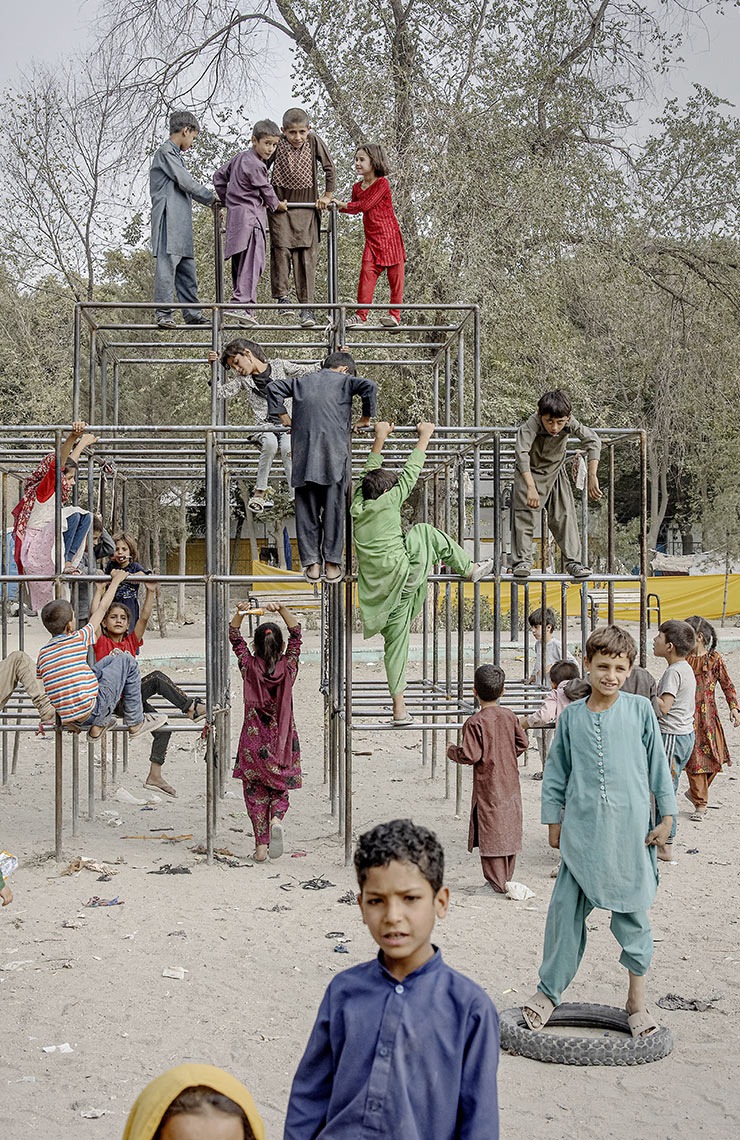
Children, mostly refugees from other parts of Afghanistan, at the playground outside a large refugee camp. Sound of laughter and play. The air is hot. It smells of freshly cooked food and sewage at the same time. In Kabul, people await the next move of the Taliban regime.

Ahmed Umar is said to be the first gay Sudanese man to appear in public. Now, after fleeing to Norway, his art is representing the faceless bodies of queer people in Sudan.
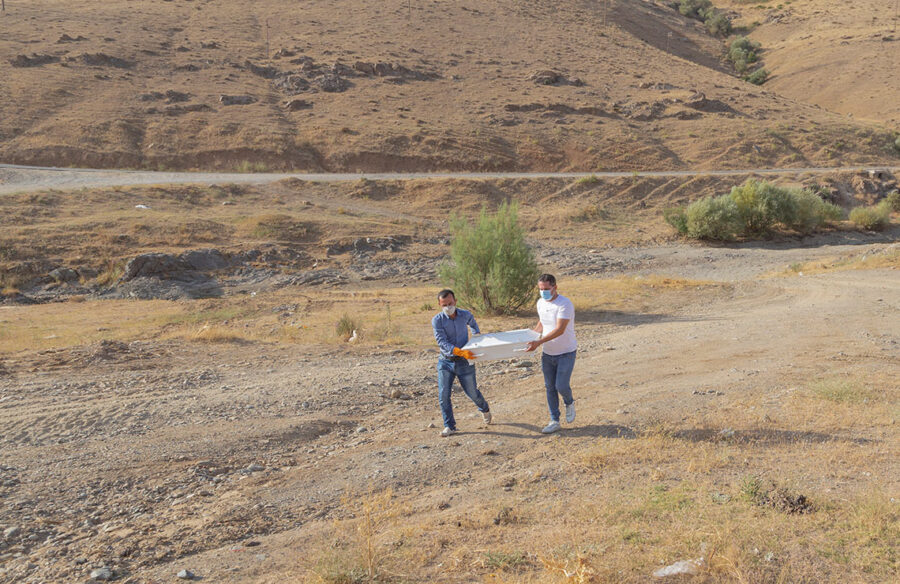
Seventeen-month-old Artin Irannezhad was found on Karmøy after drowning with his family as they fled Iran in hopes of reaching England. Here, his uncle’s friends have just examined the casket on its way home to Sardasht.

Lena Marie Hansen has 24 tattoos, several of them on her face. Most of them symbolise something important to her. “I’m a wandering eye-catcher, but it suits me fine.”
People Trends in short

Remote work is here to stay, which will effect most things connected to our jobs.
People trends in short
Remote work is here to stay, which will effect most things connected to our jobs.
Remote work and remote hubs
Offering wider remote work is a growing internal and external demand. Schibsted is testing a hybrid workplace and is exploring alternatives. We also believe that we can establish more workplace hubs that are located outside the big cities. These hubs could be close to universities and offer jobs or assignments to talent that does not want a fully remote setup or a full relocation.
Flexibility
The need to work remotely was largely born out of the pandemic, and once employees all over the world understood the benefits of a more flexible work-life balance, there would be no going back. Going forward, flexibility will be a prerequisite for companies – and the ones who can’t offer it will likely jeopardize losing their talent.
Diversity
The possibilities for diversity also increase with remote work as companies will be able to hire talent from anywhere in the world, without the need to come to the office. That means there will be greater opportunities to hire people with disabilities and people working in less urban areas.
Cloud Comms
Collaboration will take place online, and that means we’ll be requiring better and more agile cloud communication tools. Not only for storage of data but for working together seamlessly from a distance.
Urban planning
Currently, our urban planning was made for giant office buildings with constant wifi-use. As more people start working from the suburbs, offices will likely become smaller and internet connections will have to be built stronger in more remote areas.
Fewer meetings
Zoom fatigue grew strong during the pandemic and many places of work have realised that meetings need to have a clear purpose. Going forward, we will likely have fewer face-to-face meetings online and more asynchronous communication like email, collaborative documents and tools like Slack.
Better policies
Working hours have increased as more people work from home. While some have had a great experience with flexible hours, there will be a need for better policies tracking that people don’t overextend themselves. Some such policies could extend to time-tracking software, although many employees believe this would lower morale.
Gen Z
Generation Z will further develop the remote workforce, as they are even more tech-savvy than the millennials. Gen Z also has more expectations regarding growth in the workplace and they will likely have different priorities than previous generations. Research suggests they expect flexible schedules and opportunities to learn new skills on the job.
More specialists
When it comes to remote versus on-site talent, it’s likely that more people working remotely will specialise in a certain field, as it would lead to more opportunities and higher pay. Research also suggests that generalists will be preferred on-site talent, but is likely to be paid less as they are more easily replaced.
More security
Cybersecurity will take a bigger place in our working lives. For remote and hybrid models to work, secure data infrastructure is more important than ever. Companies will likely be investing a larger portion of their budget into reliable IT security assisted by machine learning to learn how hackers may put their data at risk.
Read more: How Schibsted is waging the war for talent
Sustainability makes you future-fit

Sustainability makes you future-fit
The companies that fail to see that sustainability is the next big innovation leap might be out of business sooner rather than later, says Britt Nilsen, Head of Sustainability in Schibsted.
Sustainability will be a prerequisite for doing business in the future. It’s not something that you can choose to relate to or not. Those who think they have a choice in the matter probably lack understanding of what sustainability is, as well as how it represents new business opportunities. The most common misunderstanding is the presumption that sustainability is about climate change only, coupled with the belief that those types of challenges will not hit us for many years to come.
It’s important to understand that sustainability is also about human rights (all people should get the same opportunities, freedom of speech), labour rights (freedom of association, working conditions, health and safety) and anti-corruption (how do we do business in an ethically correct way). It is a lot to take on. You need to work methodically – and perhaps most importantly – sustainability needs to be part of your overall business strategy.
It starts with strategy
In Schibsted, it all starts there – with strategy. We strive to consider and manage our impact in all business decisions and, through our services, empower people to make economic and sustainable choices. One of our overarching goals is that we must make sure that growing our business and having a positive impact on society and the environment is equally important.
We have one strategy, and that strategy must be sustainable. Sustainability is not something that we do on the side whenever it suits us. It’s not about complying with laws and regulations and commitments or giving money to charity. Sustainability is an integrated part of our core business, and we need to treat it as a source of business opportunities. We must continue earning money to stay in business, but we need to do it in a sustainable way by maximising our positive impact on society and the environment.
It’s like putting on your sustainability glasses and looking through them in everything you do, in our day-to-day work and all our business decisions. But to be able to do that you need to do the work. You need to understand how the business and strategy connect to the four sustainability areas mentioned previously and how you can make the most impact, and you also need to check that out with your stakeholders.
15 identified areas
Through a so-called materiality analysis, Schibsted has decided to focus on 15 areas within sustainability. To identify them, we benchmarked ourselves against peers, explored risks and opportunities, evaluated possible impact on the environment and the society, and completed stakeholder dialogues. All the results were then discussed with the executive management team.
In Schibsted it is through our business that we can make the greatest impact. We are not an industrial company and our own greenhouse gas emissions are limited, so reducing them will have a limited effect. But through our marketplaces we facilitate second-hand trade and empower circular and sustainable consumption. This means that our users can cut greenhouse gas emissions through their own circular consumption.
Focus is on our own businesses
The effect in 2020 for Schibsted is that the saved emissions through our marketplaces are 55 times higher than our own emissions. That’s why we should focus most of our resources on our own business and finding new business opportunities, because this is how we make the most impact.
For the 15 sustainability focus areas in Schibsted, we have set long-term ambitions and short-term targets. These are the responsibility of the executive management team. They have included these ambitions and targets in their execution dashboards, which is followed up regularly in progress reviews. That’s the only way to make sure that sustainability is not done on the side but is actually integrated in what we do day-to-day.
Of course, it’s easy to say that this is the way it should be done. Working with sustainability is a lot about mindset and it takes time. Going from a world where you only deliver value to the shareholders to embracing an entirely new dogma in which you should deliver value to all stakeholders is not done overnight. But being a bystander is not an alternative either, so it’s time to just jump straight into sustainability to make sure that you are future-fit.

Britt Nilsen
Head of Sustainability
Years in Schibsted: 23











